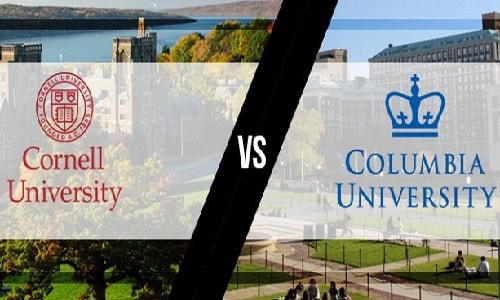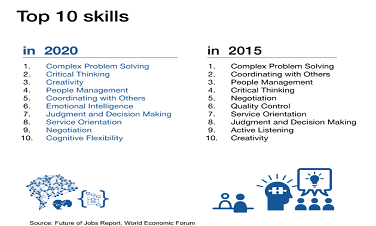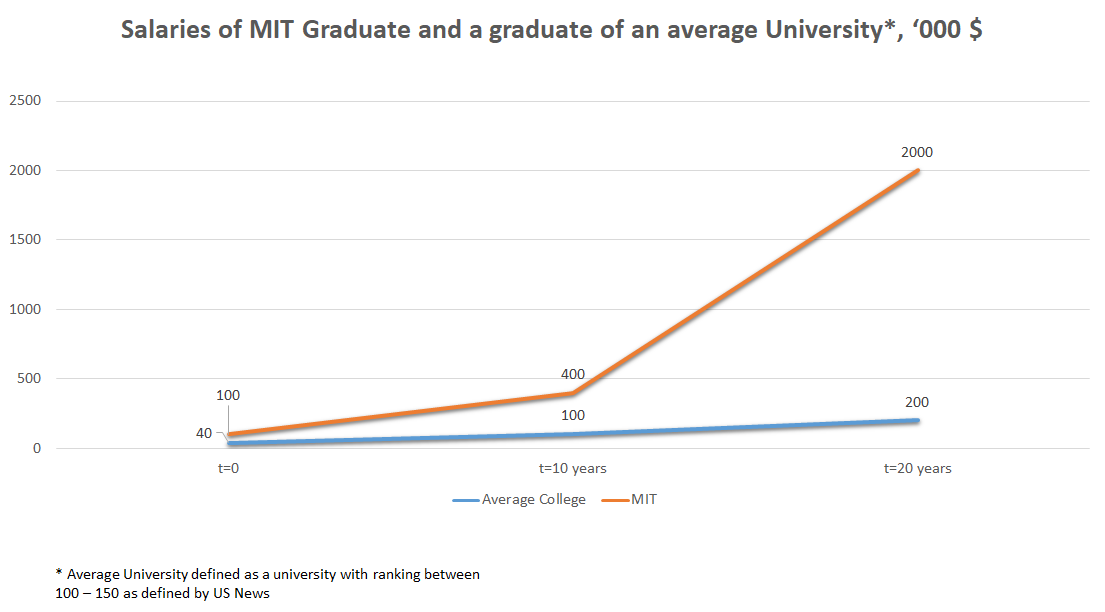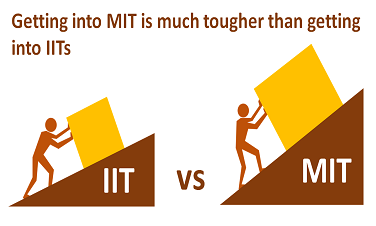How to build validation elements within your admission essay?
- Written by UnivAdmitHelp
- Category: Admission Application
- Published on 30 Aug 2018
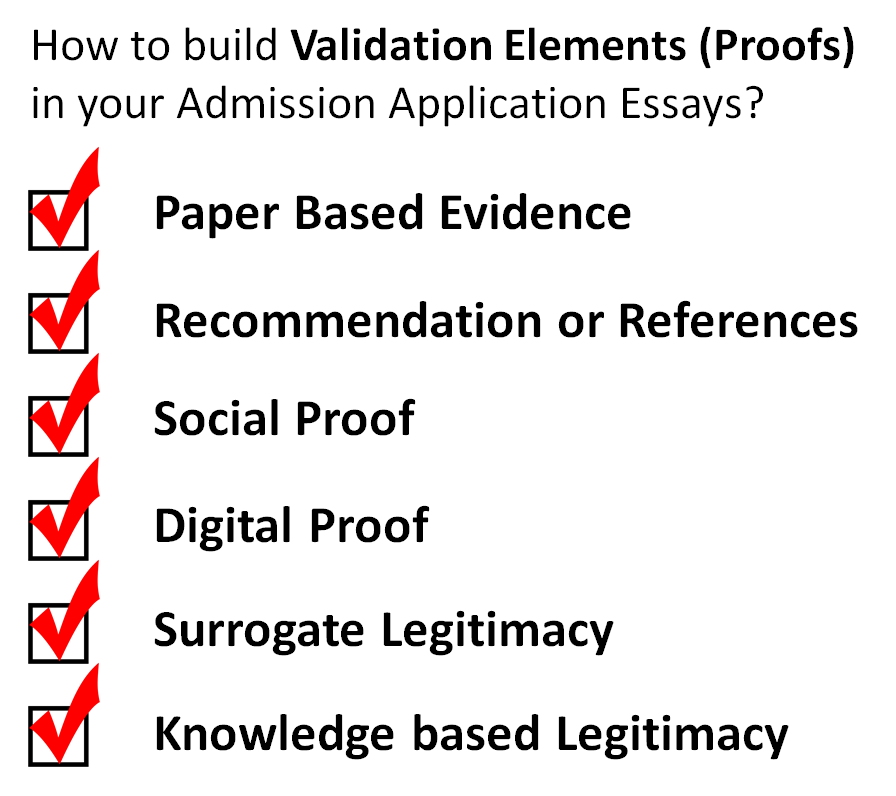
How to build ‘validation elements’ within your admission essay
Elsewhere we have argued that the essays which are written in the form of stories and have corresponding validation points built in are likely to be successful. Such essays are not just more convincing, but with credible evidence of the claims being made, they are likely to succeed.
This is easier said than done. Building proofs or validation elements within your essays could be extremely hard. The more successful essays build out these validation elements over a period of time through rigor and hard work. Just linguistic fluency is not always enough. Over a period of time, universities have also become more watchful of the claims being made in the admission applications. They now use sophisticated AI based algorithms, social media crawler programs, and third party agencies to validate the claims being made. This is especially true of ‘distant’ countries with not-so-stellar culture of intellectual honesty such as India and China.
The best way of building proof is through over-the-period hard work and in general; there are no shortcuts.
Through analysis of over a thousand successful essays, we have culled out a few general approaches of building proof as given below :
1. Paper-based evidence: Any record from an agency with some authority fits into this category of proof. Certificates for social and extra-curricular activities and academic transcripts are usually considered a part of this set of evidence. This is usually the most popular (and traditional) way of generating proof and is generally considered the most reliable. The only caveat with this category of proofs is around the quality of ‘certificate-granting’ agency. Certificates given by Government or nominees, National or state level institutions, and established organizations have a lot of value; while fly-by-night operators, local NGOs, etc. may not give you anything that is useful.
In your essays, you should state this kind of proof upfront. Some examples are as under –
“Despite my dyslexia, I scored 95% in mathematics and 86% in English in the national board exams of India (Class Tenth)..”
“I have finished in the top ten percentile of the class in subjects such as Psychology and its Applications, Research Methodology and Statistics, Clinical Psychology and Counselling Psychology.”
“I have performed at national level in all forms of traditional kathak; even getting the opportunity to perform in the front of the UN secretary general, Kofi Annan in 2015..”
However, for a lot of people, getting certificates is not easy. Some are stage-shy, or do not have the necessary temperament to perform in front of an audience. Some others have skills or interests which do not lend themselves well to paper-based-evidence. Hence, increasingly other kind of validation mechanisms have come into being.
2. Recommendation or References: Considered to be at par with paper-based evidence, a teacher recommendation or a professional reference has tremendous value in making your application credible. The caveat with this kind of proof is that the teacher or the referee needs to use it in his/her recommendation. And when you cite it in your essays as well, it becomes extremely powerful. The great advantage of a teacher recommendation is also in the fact that this is a personal testimony from an expert and can get into areas where you might not have sufficient paper proof.
Consider the following example to understand this better –
“In grade Eleventh, I could use Halo Wars (a strategy-war-game) to create a decision-making environment wherein we could make probabilistic choices and reflect upon our decisions. Earlier, teachers used to work with dices and coins to help us understand probability. With Halo Wars, they had a more engaging tool which could help us learn more effectively.”
The above statement is from the essay of a successful applicant to University of Washington. Alone, it is just an assertion which has no value. However, when complemented with the Mathematics teacher’s recommendation about the student’s love for Maths, especially probability, and his keenness to find novel solutions to support classroom learning environment, it becomes very powerful evidence!
We have a very pointed blog on people that you can take references from. It fundamentally says that you should take references from people who have seen your work as close quarters. Immediate bosses, teachers, etc. are considered good referees.
3. Social proof: In this uber-connected world, universities and admission officers would invariably browse through your social profile to see whether there are corroborative elements to prove your story. They also look for potential red-flags in your social behaviour. However, some people have gone ahead and used social media to generate proof for their admission essays. Here are a few examples –
- Game play recordings and YouTube followers: A student was a top-gamer. He would spend more than 6 hours every day, playing computer games. That was the only thing that he did and the fact that he had been doing it for the last ten years was the crux of his admission application essay. In order to buildproof in his essay, he cited his YouTube followers which ran into a few hundred thousand. This was very powerful proof, and eventually helped him get admission at MIT and Stanford.
- Another student who went to Parsons, New York showcased her paintings on Facebook and eventually build up a boutique business selling to art connoisseurs. The address of her FB page of the paintings that she had made was the only proof that she needed to get in!
- Another student built out a project on Kickstarter – and in the end got enough funding to not just build a prototype and sell to the select customer who pre-ordered, but also could showcase this in his B-School admission application. HBS was very happy to take him in!
- Many Computer Science students have contributed to projects on Github and participated in code-challenges like Kaggle and CodeChef – that is proof of their coding skills and if your piece of code is forked a bunch of times, or has been shared extensively, then that is all the proof you need to claim your seat at a top Computer-Science Engineering college like CalTech or UC Berkley.
Social proof is very powerful because of its very nature – if thousands of people are following you or like your work, or better still support you by their money, then that is an incredibly honest way to assess your skills in that area.
4. Digital Proof: This is different from social proof, as it does not deal with your ‘social following’ or ‘community engagement’. It focuses on the work that you have done which is showcased through digital means. Example: Often, start-ups fail but their digital remains survive. Many successful business school applicants have built businesses which did not survive but the websites of these businesses gave them enough credibility to put forward their case as ‘failed entrepreneurs’ – who are liked by everyone!
Another student loves to solve Rubik’s Cube – however, as against a world record of 4 seconds or so, he takes 45 seconds in solving the cube. His claim to fame cannot be a story which is based on his proficiency in solving Rubik’s Cube. So he did something absolutely amazing – he set up a home-based business in which he taught over a thousand students tricks to solve a Rubik’s Cube. The website for the said business had testimonials from many such students. His admission application talked about his leadership ability and desire to be relevant to the students in his local community who don’t like Mathematics. This, he substantiated by a digital proof – his website address. He got in!
5. Surrogate Legitimacy: Getting associated with brands which are internationally known is a good strategy. This association tends to build some kind of legitimacy that rubs off to your profile and story.
A student participated in a massive lake-clean-up project in the city of Coimbatore. This clean-up project was later showcased as a UN sponsored project that restored bio-diversity to the city of Coimbatore. There was extensive coverage in the newspaper and while no specific names were mentioned, the project was described in great detail. The names of dailies like Hindu, Times of India and above all United Nations conferred a degree of legitimacy on the said student.
Similarly, a student got selected in the Yale Young Global Scholar program. He did not participate in the event though! However, he talked about the program extensively in his application. This also ensured that the brand of Yale rubbed off to his application to a certain extent.
Surrogate legitimacy techniques should however be not used as the first line of proof in your admission essays. We recommend these to be used as additional layers of proof in your essays – thus they also serve as secondary anchors for your story and provide content pivots for your narrative.
6. Knowledge based legitimacy: This one is extremely hard to pull off but if used well within the rubric of your narrative, not only lends meat to your story but also establishes you as an expert who knows his subject.
Consider the following excerpt from a successful Cornell essay –
“ A few months back, In Kodaikanal Shola Forest, we were trying to spot the rare white bellied Blue Robin. Since the area was large, we split into 3 teams of two each. Each team consisted of a photographer and a spotter. Our team found it, but was unsure if it was Blue Robin or Nilgiri Flycatcher. So we took a picture, and sent it to another (Coimbatore Nature Society) CNS team member for verification. Eventually, we together identified it as the Blue Robin. We learnt that one distinguishing feature of Blue Robin was the striking Orange colour of its eyes…”
This detailing, when complemented with the other primary proofs is extremely critical to establish the author as someone who has really done this before and who knows his birds! The flip-side is that any expert can talk about this point to a much more nuanced level of detail. Therefore, one needs to be very careful in building this kind of proof through the body of the essay and in no condition should be used exclusively without a primary layer of other more credible evidences.
In summary, a story which has many layer of evidences - often a number of evidences around a single point – is much more likely to land as an authentic one. This validation process could be cumbersome and needs to be built over a period of time in order to achieve the requisite impact. Start early with building these corroborating pieces of your narrative and you are more likely to be successful!
Other Interesting Blogs
Who should I get my References from?
How important are SAT/ACT scores?..
The Power of Narrative in the context of your Admission Application
Recent Posts
-
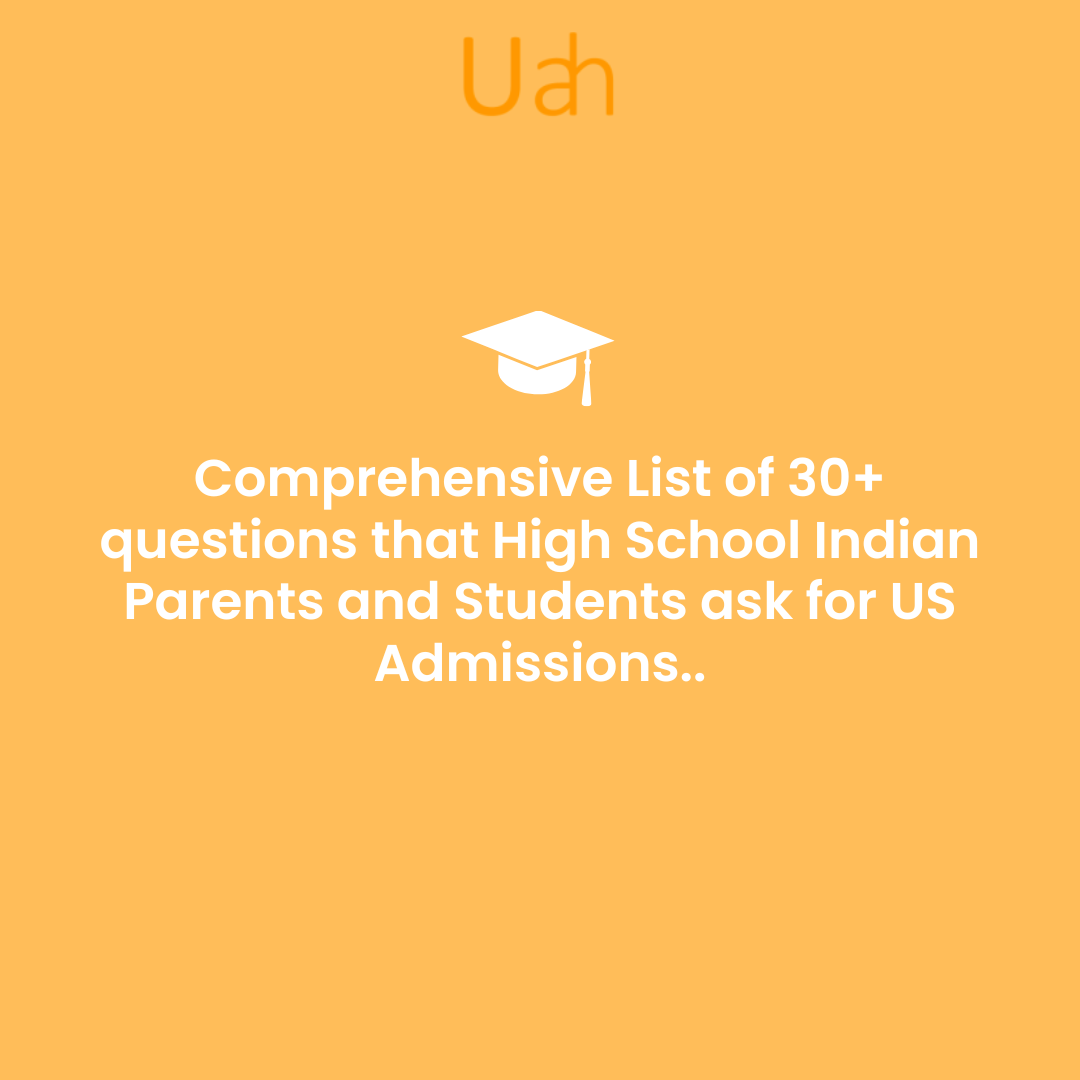
Comprehensive List of 30+ questions that High School Indian Parents and Students ask for US Admissions..
-
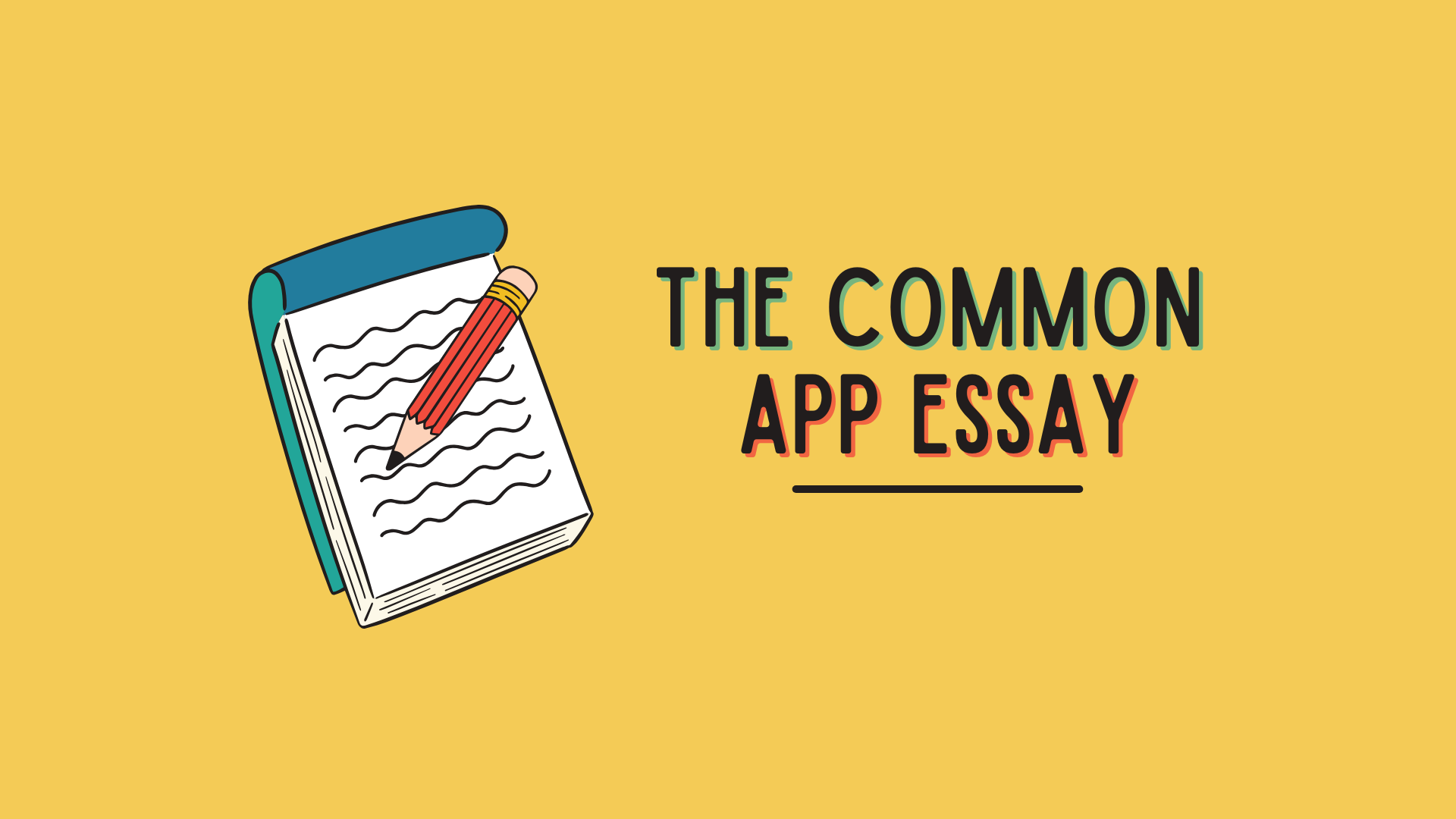
Common App Essay Tips 2025
-
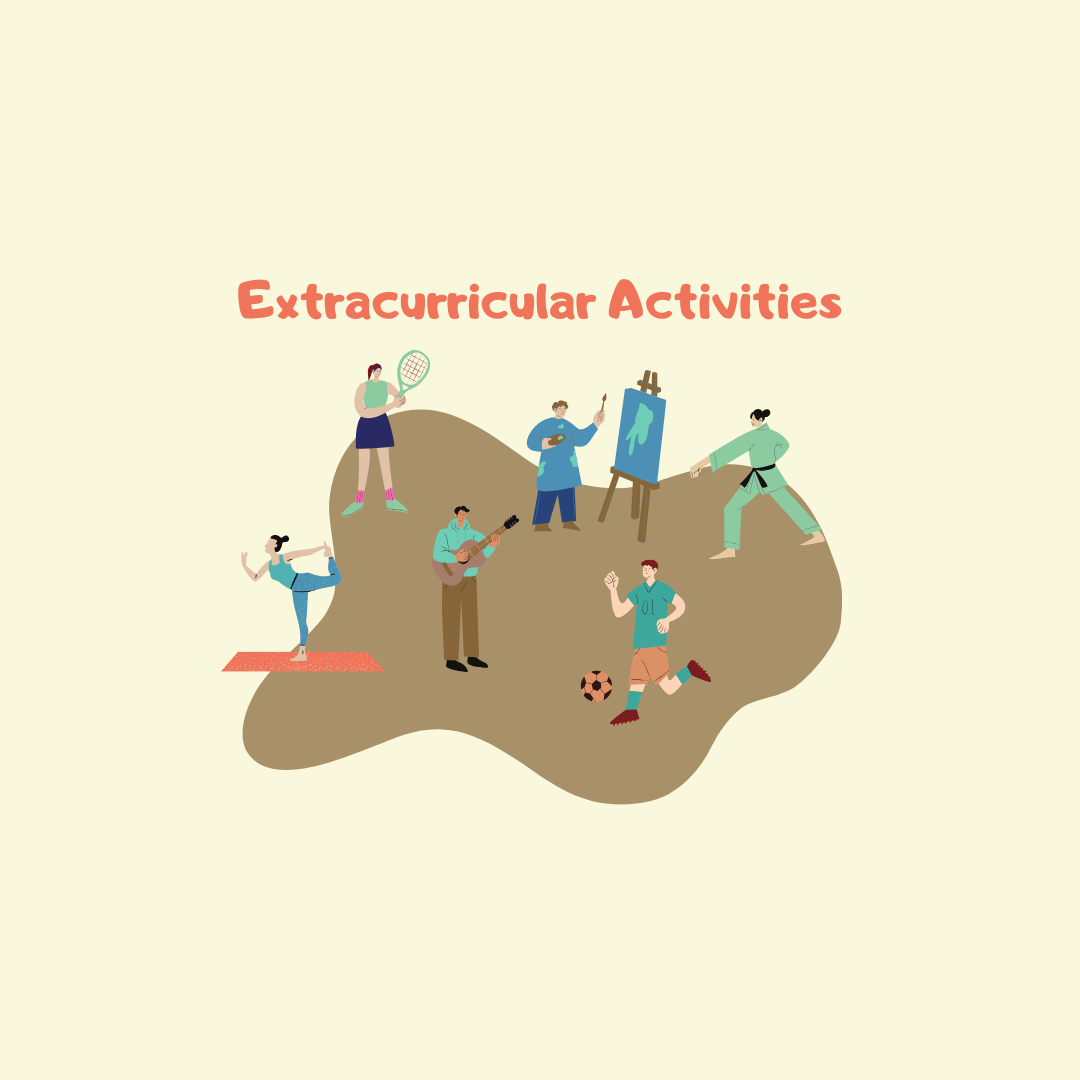
Best extra-curricular activities for college admission for Indian students
-

How Many Universities Should You Apply To? Expert Tips for U.S. and U.K. Admissions for Indian Students
-

Step-by-Step Guide to Creating an Exceptional Capstone Project for Indian Students
